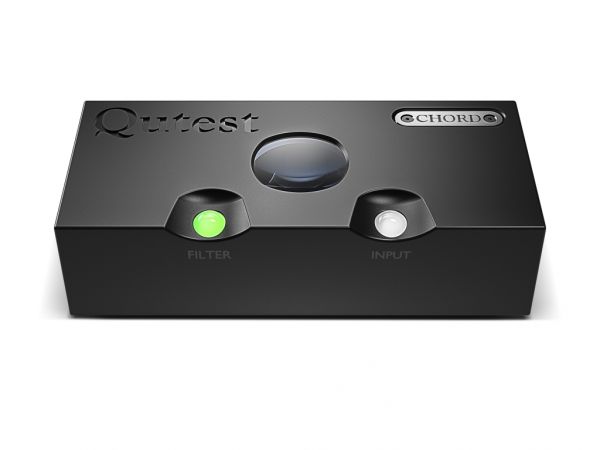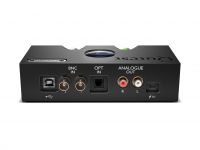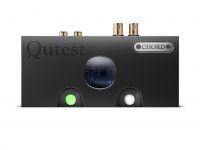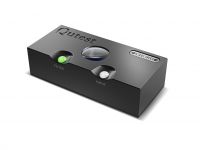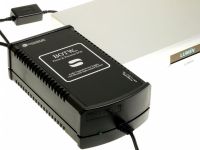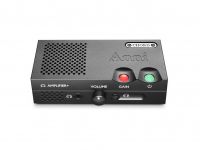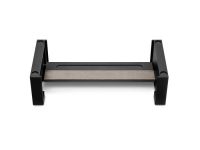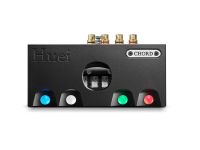CHORD ELECTRONICS
QUTEST Black
DAC Digital-Analog-Referenzkonverter mit USB-Anschluss, Schwarz
1 am Lager
Katalogpreis
CHF 1'189.00
Beschreibung
Qutest ist ein Was Hi-Fi? Preisgekrönt DAC mit einer Leistung, die seinen kompakten Abmessungen nicht gerecht wird. Mit DAC Architektur basierend auf unserer branchenführenden FPGA-Technologie, Qutest bietet unübertroffene Klangqualitätsgewinne.Das Qutest DAC wurde entwickelt, um die Klangqualität des Systems sofort zu verbessern. Es ist die neueste Weiterentwicklung unseres günstigsten „Standalone“-Geräts. DAC, also eines, das keinen eingebauten Kopfhörerverstärker enthält, wie das Mojo 2 und Hugo 2.
Das Qutest ist Was Hi-Fi?'s 'Beste DAC' 2023 1,000 £+ und ein What Hi-Fi? 'Am besten DAC'Gewinner jedes Jahr seit seiner Einführung (2018-2022). Es ist nachweislich führend in seiner Klasse und basiert auf unserer preisgekrönten proprietären FPGA-Technologie, die ihm eine unübertroffene technische und klangliche Leistung verleiht.
Es ist perfekt ausgestattet, um die Vorteile unserer digitalen Technologie auf eine Vielzahl angeschlossener Geräte zu übertragen. Es verfügt über einen galvanisch isolierten USB-B-, optischen und koaxialen Digitaleingang, der eine sofortige Leistungssteigerung sowie die Möglichkeit zur Modernisierung veralteter digitaler Quellenkomponenten ermöglicht.
Auch das Gehäuse des Qutest ist völlig neu. Es hat eine deutlich höhere Masse als sein Vorgänger und wurde aus massivem Flugzeugaluminium präzisionsgefertigt. Die Qutest-Leiterplatte befindet sich in einer flachen Vertiefung des massiven Aluminiumgehäuses, wodurch die Leiterplatte im Vergleich zu früheren Konstruktionen besser geschützt und zusätzlich von externen Vibrationen isoliert ist.
Der Qutest bietet die Hugo 2-eigenen, vom Benutzer auswählbaren Frequenzformungsfilter und Eingangswahlschalter, die über zwei an der Blende montierte Kugeln zugänglich sind und nützliche Flexibilität bieten. Außerdem verfügt er über analoge Cinch-Ausgänge für den Anschluss an Vollverstärker, Vorverstärker und Kopfhörerverstärker sowie über hochauflösende Dual-Data-Digitaleingänge für den Anschluss an zukünftige Chord Electronics-Produkte.
Eine weitere neue Funktion ist eine vom Benutzer wählbare Ausgangsspannung, die in 1, 2 und 3V RMS verfügbar ist und eine flexible Verbindung mit einer Vielzahl von Partnergeräten ermöglicht.
Das What Hi-Fi? 'Am besten DAC' 2023/24 Qutest ist der definitive kleine audiophile DA-Wandler.
EIGENSCHAFTEN
- Materialien: Präzisionsgefertigtes Aluminiumgehäuse mit polyKarbonatknöpfe und Glas-Sichtportal. Nur in Jett Black erhältlich.
- Gerätestromversorgung: 5V 2amp Micro USB
- Tipplängenfilter: 49,152 - 10-Elemente-Pulsarray-Design
-
Konnektivität (Eingang):
- USB Typ B (weiß): 44.1 kHz bis 768 kHz - 16 Bit bis 32 Bit
- 2x BNC-Koax (rot): 44.1 kHz - 384 kHz - 16 Bit bis 32 Bit
- 1x Dual-Data-Mode-Eingang (beide BNC-Koax-Eingänge zusammen verwenden): 44.1 kHz bis 768 kHz - 16 Bit bis 32 Bit
- Optisch (grün): 44.1 kHz bis 96 kHz - 16 Bit bis 24 Bit
- Konnektivität (Ausgabe): 1x Stereopaar Cinch (links und rechts)
- PCM-Unterstützung: 44.1 kHz, 48 kHz, 88.2 kHz, 96 kHz, 176.4 kHz, 192 kHz, 352.8 kHz, 384 kHz, 717.6 kHz und 768 kHz. 16 - 32 Bit
- DSD-Unterstützung: Native Wiedergabe unterstützt. DSD64 (Single) bis DSD512 (Octa-DSD)
- Variable Ausgabe: Fest, aber wählbar zwischen 3 V (blau), 2 V (grün) und 1 V (rot) durch zweimaliges Drücken von 'Filter' + 'Eingang' beim Start
- Treiberunterstützung: Treiberlos unter Mac OS X und Linux, Treiber für Windows erforderlich
- Digital Designer: Rob Watt
- Mechaniker: John Franks
- Herstellungsland: England
Spezifizierungen
- Chipsatz: Chord Electronics benutzerdefiniertes codiertes Xilinx Artix 7 (XC7A15T) FPGA
- Tipplänge: 49,152
- Pulsarray: 10-Element-Pulsarray-Design
- Frequenzgang: 20Hz - 20kHz +/- 0.2dB
- Ausgangsstufe: Klasse A
- THD: <0.0001% 1 kHz 3 V RMS 300 Ω
- THD und Rauschen bei 3 V RMS: 117 dB bei 1 kHz 300 Ohm 'A' gewichtet (reference 2.5v)
- Geräusch 2.6 uV 'A' gewichtet: Keine messbare Grundraummodulation
- Kanaltrennung: 138 dB bei 1 kHz 300 Ω
- Gewicht: 770 g
- Maße: 4.5 cm (H) 16 cm (B) 8.8 cm (T)
- Boxgewicht: 1500 g
Artikelnummer : CHQUTESTB

